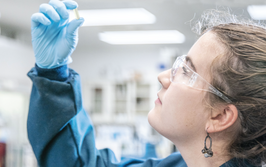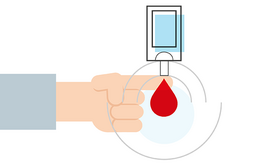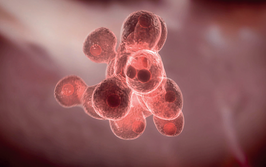A View From the Biosynthetic Bridge
Regulations in the US make cannabis research highly challenging. Could biosynthetic approaches to cannabinoid production prompt regulators to rethink?
From a US perspective, cannabinoid-based drug development and research has been particularly difficult because of the designation of the plant. Cannabis, including its cannabinoids, are classified as “Schedule I” drugs, which means they are defined as having “a high potential for abuse,” “no currently accepted medical use in treatment in the United States,” and lacking “accepted safety for use [...] under medical supervision.” Researchers, therefore, need to jump through a number of regulatory hoops to carry out cannabinoid research. It’s interesting to contrast the US situation with what goes on in other countries, specifically in Israel, Canada and the UK, which is where most of the breakthroughs are taking place.
In the US, a few states have reclassified and legalized cannabis. For example, Colorado, legalized the recreational use of cannabis in 2012 for individuals over the age of 21. A number of Colorado residents suffering from certain medical conditions can also access cannabis from dispensaries that offer a range of cannabis strains with different qualities. In states where cannabis is legal, it is easier to conduct research, but there are limits. When Teewinot Life Sciences first started, we decided to focus on the biosynthetic production of pharma-grade cannabinoids but it was clear that we would quickly exceed what was legal in Colorado and elsewhere in the US. Today, we are headquartered in Tampa, Florida (which implemented the Florida Medical Marijuana Legalization Initiative in 2016). We conduct our internal research and development in Canada under license from Health Canada, and all our existing and planned intellectual property are housed by our subsidiary in Ireland. In fact, a number of US companies have uprooted and moved overseas to facilitate their cannabinoid research efforts.
Genesis through biosynthesis
To create biosynthetic cannabinoids, we use a production environment that replicates the internal cellular function of the cannabis plant. We can currently produce 18 different cannabinoids, which are identical to those produced by the plant. This is really important because many cannabinoids have multiple chiral centers and when chemically synthesizing cannabinoids it is difficult to avoid stereoisomers, which can have very different effects to their chemical cousins. Our processes use the same mechanism as the plant, so they end up being the same as the compounds produced by the plant. Our approach can include a mixture of organic chemistry, synthetic biology and biocatalysis. The synthetic part refers to changing the structure of an organism, such as modifying a single-celled microbe, to encode performance of a new function required for the overall process. Biocatalysis involves using enzymes to react with a starting material to produce the desired end product. Essentially, we have engineered microorganisms to produce specific synthases found in the cannabis plant. We react these synthases with the same starting material the plant uses, which – depending on the conditions set up within the bioreactor – yields different cannabinoids.
Synthetic biology and biocatalysis are not new to the pharma industry – and are already used extensively for producing medicines. One of the benefits of our process is that it can be used to enhance a naturally occurring molecule. For example, we have developed a pro-drug of CBD that has a half-life of more than 12 hours. Standard CBD has a half-life of around 70 minutes, which means that patients may have to dose many times a day to maintain a particular blood plasma level, whereas boosting the half-life would allow for just a twice daily dose.
Compared with the botanical approach to cannabinoids, the advantages of synthesis are speed and diversity. Botanical extractions usually take between three to four months, whereas chemical synthesis takes around two months to create a limited number of specific end products. Our process takes between two and seven days, which demonstrates the speed that a biosynthetic approach can bring to cannabinoid production. In addition, a biosynthetic approach removes the need to test for the various contaminants and impurities that may exist within a botanically grown plant. Plants, after all, are living things, which makes them prone to variability, although some companies are seeking to mitigate this reality by using plant clones.
High times
Fantastic research around cannabinoids is being conducted worldwide on a variety of indications, including pain, cancer, metabolic disease, psychiatric disease and much more. It seems clear that there is huge potential for cannabinoids for many unmet medical needs. We still need more research and more methods to investigate the remaining cannabinoids – at the moment, THC and CBD are receiving the most attention, but given that that are over a hundred other cannabinoids, we are only scratching the surface of what could potentially be achieved. Many cannabinoids have no known chemical synthesis route and occur only fractionally in plants, making them commercially unviable to extract. A researcher may hypothesize that a certain cannabinoid will benefit a certain patient population, but unless they can get their hands on the cannabinoid, they will never find out.
For the future, my hope is that our population will recognize there is more to cannabis than getting high. I can, of course, appreciate regulators wanting to limit exposure of psychotropic drugs to the general population, but only a few cannabinoids are psychotropic, which means that a blanket ban does a tremendous disservice to the wider patient population that could be well served by the remaining non-psychotropic compounds. We are currently making the case to a variety of regulatory bodies about rethinking the categorization and scheduling of these non-psychotropic molecules to accelerate the development of new medicines.
Jeff Korentur is CEO of Teewinot Life Sciences.
If you’d like to delve even further into the science of cannabis then check out The Cannabis Scientist, at: https://theanalyticalscientist.com/issues/0217/issue-2-of-the-cannabis-scientist/
A Career in Cannabinoids
Cannabis Complex
Smashing the Stigma with Science
A View From the Biosynthetic Bridge
Forming a Society for Cannabinoids
Enhancing Endocannabinoid Signalling
Jeff Korentur is a CEO of Teewinot Life Sciences.


















